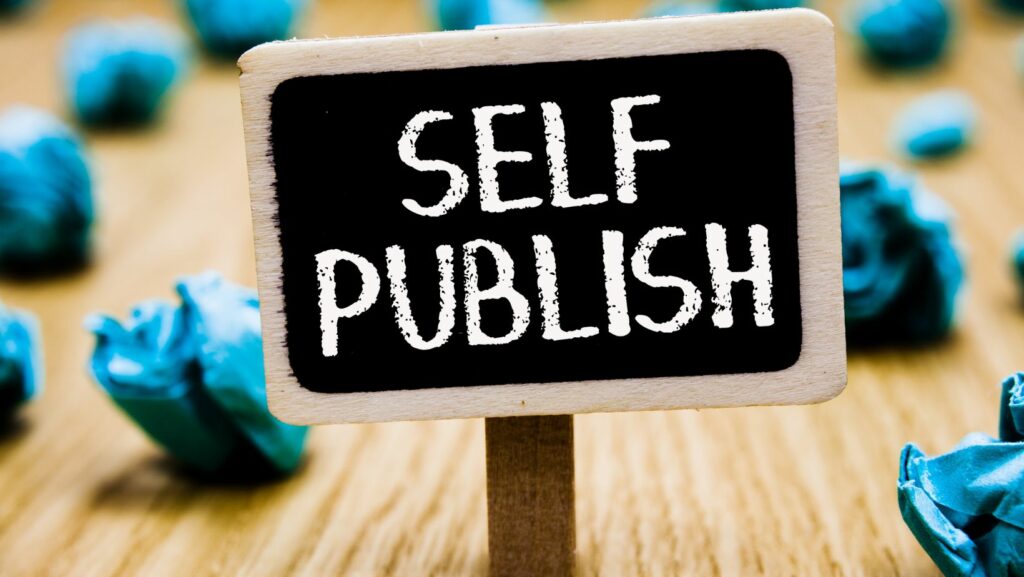How to Start an Indie Publishing Company
- Indie Publishing Empowerment: Starting an indie publishing company offers authors and entrepreneurs creative control and the opportunity to showcase unique stories that may be overlooked by traditional publishers.
- Defining Your Niche: Identifying and defining a specific niche allows indie publishers to effectively target audiences, enhance brand loyalty, and establish themselves as authorities in their chosen genres.
- Business Planning Importance: A comprehensive business plan is crucial for success, outlining the mission statement, market research, financial projections, and marketing strategies.
- Estimating Startup Costs: It’s essential to accurately estimate startup costs, including equipment, design, editing, and marketing, to establish a solid financial foundation for the publishing venture.
- Funding Opportunities: Exploring diverse funding options such as personal savings, crowdfunding, grants, and small business loans can provide the necessary capital to launch and sustain an indie publishing company.
- Effective Marketing Strategies: Building a strong online presence and networking with industry peers are vital for attracting readers, enhancing visibility, and fostering community around published works.
 In today’s digital landscape, starting an indie publishing company has never been more accessible. Aspiring authors and entrepreneurs are seizing the opportunity to take control of their creative destinies. With the right tools and knowledge, they can carve out their niche in the competitive world of publishing.
In today’s digital landscape, starting an indie publishing company has never been more accessible. Aspiring authors and entrepreneurs are seizing the opportunity to take control of their creative destinies. With the right tools and knowledge, they can carve out their niche in the competitive world of publishing.
Launching an indie publishing venture allows individuals to showcase unique voices and stories that traditional publishers might overlook. From understanding the intricacies of self-publishing to mastering marketing strategies, this journey is both exciting and challenging. Those ready to embark on this path will discover the freedom and fulfillment that comes with bringing their literary dreams to life.
Understanding Indie Publishing
Indie publishing involves self-publishing authors and entrepreneurs launching their own imprints. This model allows for creative control, enabling writers to dictate every aspect of their work, from content to presentation. Unlike traditional publishing, indie publishing emphasizes personal vision and independence, making it appealing to many.
Indie publishers actively seek unique stories that may not fit into the conventional publishing mold. They focus on niche markets, catering to specific audiences. This approach enhances the diversity of literature available, fostering creativity and innovation in storytelling.
Understanding the indie publishing landscape requires knowledge of the different platforms available. Authors can choose from various self-publishing platforms like Amazon Kindle Direct Publishing, IngramSpark, and Lulu. Each platform offers distinct advantages, often catering to different types of publications and distribution methods.
Crafting a marketing strategy is essential for success in indie publishing. A publisher must identify target audiences and employ effective promotional techniques such as social media campaigns, email marketing, and blog tours. Building an online presence helps engage readers and cultivate a community around their publications.
Ultimately, indie publishing presents a viable alternative to traditional publishing. It empowers authors to share their unique voices while navigating the complexities of the modern literary market.
Key Steps to Start an Indie Publishing Company
Starting an indie publishing company involves several strategic steps. Aspiring publishers must navigate the publishing landscape, identify their unique offerings, and effectively reach their target audiences.
Researching the Publishing Industry
Researching the publishing industry provides insight into current trends, consumer preferences, and successful business models. Publishers should analyze competitors, noting their strengths and weaknesses. Understanding market demand for specific genres helps in making informed decisions about the types of books to publish. Engaging with industry reports, blogs, and forums can offer valuable perspectives on best practices and recent developments. Networking with other indie publishers through conferences or online communities can foster collaboration and sharing of resources.
Defining Your Niche
Defining a niche allows publishers to target specific audiences effectively. Publishers must identify underserved genres or topics that align with their interests and expertise. Knowing the target demographic aids in crafting personalized marketing strategies. A well-defined niche can enhance brand loyalty and establish the publisher as a go-to source within that category. Conducting surveys or interviews with potential readers can refine understanding of their preferences and expectations, ensuring the chosen niche resonates with the audience.
Business Planning and Structure
Effective business planning and structure are vital for the success of an indie publishing company. Developing a comprehensive plan lays the groundwork for achieving goals and navigating industry challenges.
Creating a Business Plan
Creating a business plan involves several key components. First, aspiring publishers must define their mission statement, focusing on unique value propositions. Next, they should conduct market research to assess audience needs, industry trends, and competitor strategies.
Developing a clear marketing plan is essential, outlining tactics for reaching target readers, such as social media campaigns, partnerships, and email marketing. Financial projections must include startup costs, revenue forecasts, and breakeven analyses to ensure profitability.
Additionally, setting clear objectives—both short-term and long-term—enhances focus and aids in measuring success. Regularly reviewing and adjusting the business plan ensures adaptability to changing market conditions and consumer preferences.
Choosing a Business Structure
Choosing a business structure affects taxation, liability, and operational flexibility. Common structures include sole proprietorships, partnerships, limited liability companies (LLCs), and corporations.
A sole proprietorship is straightforward and requires minimal paperwork, but it exposes personal assets to liability. Partnerships involve two or more individuals sharing responsibilities and profits, yet personal liability remains a concern.
LLCs provide liability protection for owners while retaining operational flexibility. This structure suits indie publishing companies aiming for professional growth. Corporations offer the highest level of liability protection but involve complex regulations and higher taxes.
Determining the most suitable structure requires considering long-term goals, potential growth, and capital needs. Consulting a legal or financial advisor helps ensure the chosen structure aligns with the company’s vision and operational requirements.
Financing Your Indie Publishing Company
Understanding financing is crucial for launching a successful indie publishing company. Effective financial planning ensures resources are allocated efficiently and helps in navigating initial challenges.
Estimating Startup Costs
Estimating startup costs involves assessing various expenses incurred during the early stages. Key expenses typically include:
- Equipment Costs: Costs consist of computers, software, printers, and office supplies. Allocate approximately $1,000 to $3,000 for basic equipment.
- Design Expenses: Design services for book covers and marketing materials often range from $300 to $1,500 per project, depending on complexity.
- Editing and Proofreading: Quality editing typically costs between $0.01 and $0.03 per word. For a 60,000-word manuscript, budgeting $600 to $1,800 is advisable.
- ISBN and Copyright Registration: Purchasing an ISBN costs $125 for a single number, while copyright registration fees generally total around $35. Multiple ISBNs can reduce costs per unit.
- Website Development: Establishing a professional website might range from $500 to $3,000, depending on design choices and functionality.
- Marketing and Promotion: Initial marketing budgets can vary widely, often requiring $500 to $2,000 for online advertising, promotional materials, and book launch events.
Compiling these estimates creates a clear picture of the financial foundation needed to start an indie publishing venture.
Exploring Funding Options
Exploring funding options provides essential pathways for financing an indie publishing company. Various resources can enhance startup capital, including:
- Personal Savings: Utilizing personal savings represents the most straightforward approach. This method offers complete control without incurring debt.
- Crowdfunding Platforms: Sites like Kickstarter or Indiegogo allow indie publishers to raise funds from a large audience. Create compelling campaigns to attract potential backers.
- Grants and Competitions: Numerous organizations offer grants or hold competitions aimed at independent publishers. Researching eligibility and submitting strong applications can yield financial support.
- Angel Investors: Partnering with angel investors might provide significant funding in exchange for a share of the business. This option often comes with valuable industry insights.
- Small Business Loans: Banks or credit unions may offer small business loans. A solid business plan, clear financial projections, and good credit history will enhance the chances of approval.
- Partnerships: Collaborating with established authors or fellow entrepreneurs can distribute startup costs while leveraging combined networks for greater reach.
Assessing these funding avenues can empower indie publishers to secure the financial resources necessary for a thriving business.
Marketing Strategies for Indie Publishers
Marketing strategies play a crucial role in the success of indie publishers. Implementing effective approaches can enhance visibility, attract readers, and build a loyal customer base.
Building an Online Presence
Building an online presence enables indie publishers to reach broader audiences. Establishing a professional website serves as a central hub for information, showcasing published works. Utilizing social media platforms, such as Twitter, Instagram, and Facebook, helps engage with potential readers and create a community around the brand. Creating a blog allows for sharing insights into the publishing journey, offering value to readers while promoting upcoming releases. Utilizing SEO techniques enhances search visibility, increasing traffic to the website and social media profiles. Consistency in branding across all online platforms is essential for recognition and professionalism.
Networking and Collaborations
 Networking and collaborations facilitate valuable connections within the publishing industry. Attending literary festivals, book fairs, and author events provides opportunities to meet authors, agents, and readers. Joining online industry forums and social media groups fosters relationship-building with peers and readers alike. Collaborating with other indie authors for joint promotions or anthologies expands reach and shares audiences. Engaging with local bookstores for events or readings enhances community presence. Partnering with bloggers and influencers for book reviews extends marketing efforts, leveraging their established audiences for greater visibility. Building these relationships strengthens credibility and opens doors to new marketing avenues.
Networking and collaborations facilitate valuable connections within the publishing industry. Attending literary festivals, book fairs, and author events provides opportunities to meet authors, agents, and readers. Joining online industry forums and social media groups fosters relationship-building with peers and readers alike. Collaborating with other indie authors for joint promotions or anthologies expands reach and shares audiences. Engaging with local bookstores for events or readings enhances community presence. Partnering with bloggers and influencers for book reviews extends marketing efforts, leveraging their established audiences for greater visibility. Building these relationships strengthens credibility and opens doors to new marketing avenues.
Offers Authors the Chance to Share Their Unique Stories With the World
Starting an indie publishing company is an exciting journey that offers authors the chance to share their unique stories with the world. By embracing the digital landscape and understanding the nuances of marketing and audience engagement, they can carve out a niche that resonates with readers.
With careful planning and a clear vision, indie publishers can navigate the challenges of self-publishing while maintaining creative control over their work. The potential for success lies in their ability to adapt to industry trends and foster connections within the literary community.
Ultimately, indie publishing is not just about producing books; it’s about empowering voices and celebrating the diverse tapestry of storytelling in today’s literary market.



